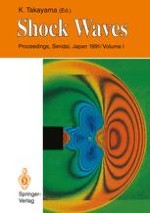1992 | OriginalPaper | Chapter
A method to reduce the pressure wave intensity caused by a shock wave radiated from a duct
Authors : K. Wakai, K. Yamada, S. Shimizu, T. Matsukawa
Published in: Shock Waves
Publisher: Springer Berlin Heidelberg
Included in: Professional Book Archive
Activate our intelligent search to find suitable subject content or patents.
Select sections of text to find matching patents with Artificial Intelligence. powered by
Select sections of text to find additional relevant content using AI-assisted search. powered by
Modern trains, such as the Shinkansen (Superexpress train in Japan) or TGV (France), pass through long tunnels at such high speed that a pressure or weak shock wave generated by the nose of a train causes a huge booming sound at the exit of the tunnel. The intensity of the noise increases with the speed of train and with the length of the tunnel. This noise is becoming to be one of the bottlenecks to increase the capacity of transportation. This report deals with a method to control a shock wave traveling in a rectangular duct to simulate a tunnel. A density gradient decreasing from the bottom wall of the tunnel toward the top, is created in the gas just before the exit of the duct so that the direction of shock wave propagation will be bent toward the bottom where the density is the highest. The behavior of the pressure wave is investigated by both computer simulation and experiments using a model duct, and a simple method is tried for absorbing the higher pressure wave at the bottom surface of the model duct.
